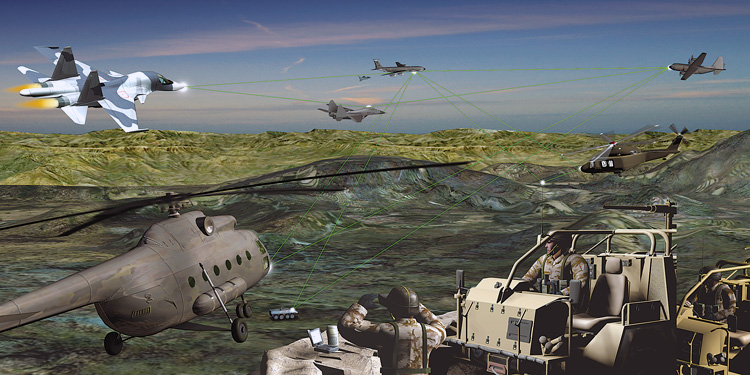- Prime Minister Narendra Modi inaugurates Aero India 2023 in Bengaluru; Releases Commemorative Stamp
- Defence Secretary meets delegations from Saudi Arabia, USA and Oman on the sidelines of Aero India 2023
- Foreign Ministers of 32 countries to attend Aero India 2023
- Embraer showcases the C-390 Millennium at Aero India 2023
Rockwell Collins Next-Generation Software Defined Radios: Enabling the Joint Netted Force
New-generation software defined radios are enabling the creation of secure, customisable real-time fully netted links between individual air- and ground-based forces.

If there is one consistency for today's armed forces, it is that no two missions are alike. One day you are patrolling in mountainous terrain. The next, you are charged with securing the streets of a town.
In today’s irregular battle space, the biggest advantage a force has is realtime information to help find, fix, track, target and engage. Use that to stay ahead of the enemy and they live to protect another day.
One system that is proving to be invaluable in that effort is compact software defined radio (SDR). And Rockwell Collins’ next-generation Talon RT-8400 SDR is the company’s newest, fully exportable receiver-transmitter for all domains.
Based on the proven Talon advanced communications systems family, the RT-8400 meets any international military’s requirements for both point-topoint and ad hoc networking communications capabilities including in the airborne domain.
WINNING TODAY’S BATTLE SPACE REQUIRES TODAY’S BEST TOOLS
“With over 36,000 units deployed, our prior-generation ARC-series SDRs have, and will continue to provide military personnel around the world with secure, reliable communications,” stated Trent Trpkosh, Principal Account Manager, Communications Products, Rockwell Collins. “The new generation RT-8400 takes that foundation and adds a number of new security and functionality features.”
Trpkosh explained that while military leaders understand the value of having their forces fully netted, it is becoming increasingly critical to have communications that enable connectivity with other domains as well.
“One of the SDR’s key differentiators is it enables airborne ad hoc networking capabilities, which is a growing requirement for our many international customers,” he said. “This will ensure interoperability between the customer’s ground-based forces and airborne assets.”
“This mobile ad hoc networking (MANET) capability, along with the SDRs ability to transmit real-time point-to-point voice, data and imagery, is critical to enabling coalition forces to effectively share critical real-time data,” he said. “It’s at the core of an airborne force’s ability to provide accurate strikes, while keeping friendly forces out of harm's way.”
SECURE COMUNICATION IS SAFE COMUNICATION
While the need to communicate efficiently with forces is critical, it has to be done in a way that still ensures total security to the operating force’s networks.
“As an SDR radio, the new RT-8400 provides superior versatility and independence to our customers,” Trpkosh said. “Utilising waveform development kits, our customers are able to independently develop and port country unique software communications architecture (SCA) compliant waveforms to their radios.”
“Additionally, the next-generation Talon-embedded programmable cryptographic security system (CSS) supports the development of customer unique cryptographic algorithms,” he said. “This enables each country’s military leaders to create a totally secure communications network with no foreign involvement.”
FUTURE CAPABLE. BACKWARD COMPATIBLE
With so many thousands of Rockwell Collins software defined radios already fielded around the world, it was imperative that the new generation Talon RT-8400, and all the Talon-series SDRs, easily communicate with both current and legacy units.
“There is an SDR for every application from airborne, to V/UHF fixed site units and ground mobile applications,” Trpkosh explained. “All of them - including our FlexNet SDR product line through an alliance with Thales - are designed to the latest software communications architecture standards.”
While the use of common software architecture delivers greater flexibility to the operators, Trpkosh stressed that it does not mean that any SDR can “talk” to any other unit right out of the box. “It does however make it possible to port waveforms currently running on a particular country’s SDR radios into today’s radios,” he said. “That will ensure seamless interoperability with both legacy and current radio systems.”
“Our new generation SDR Talon radios are extremely capable to function as part of creating a fully joint netted communications asset to today’s defence forces,” Trpkosh said.





